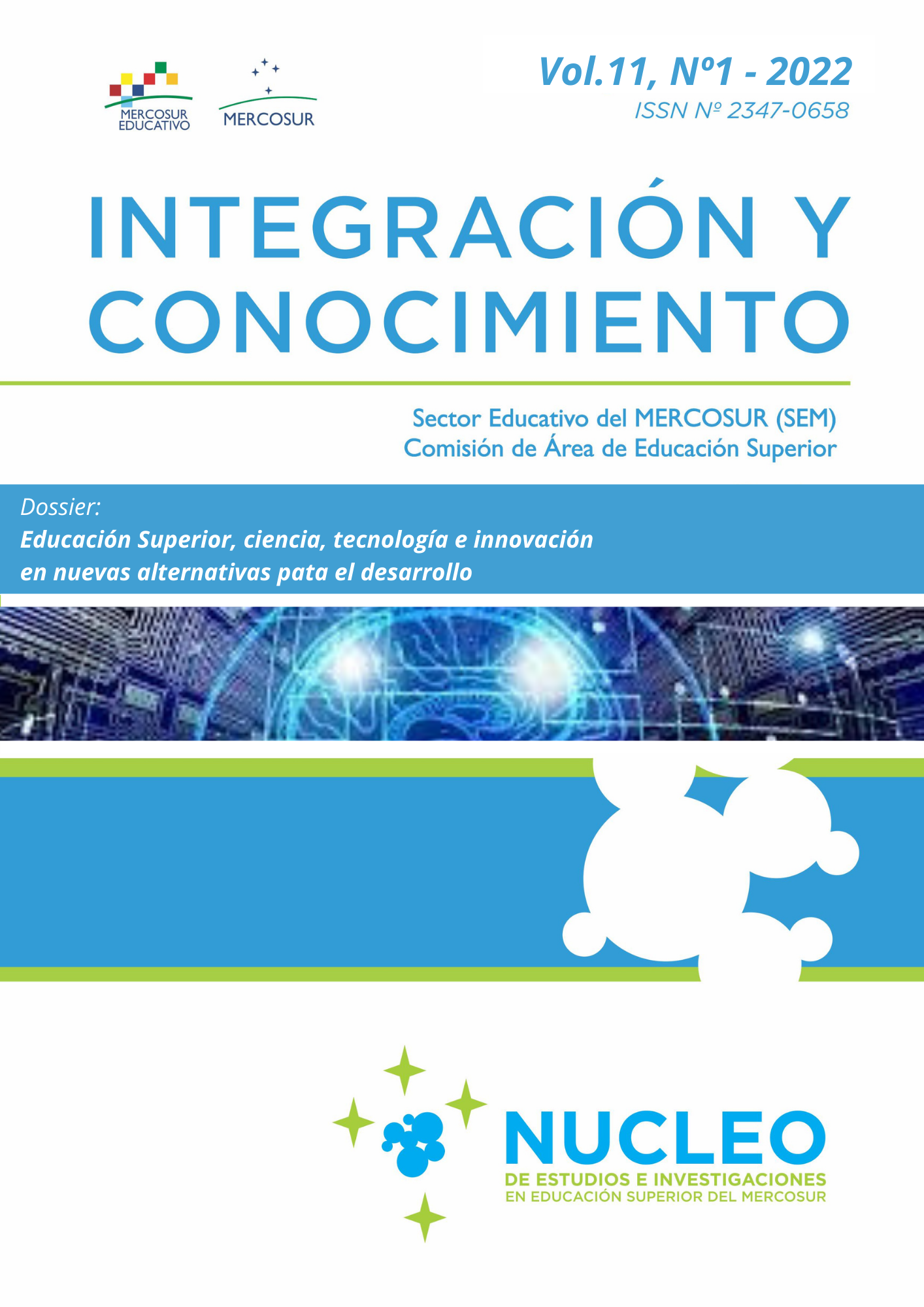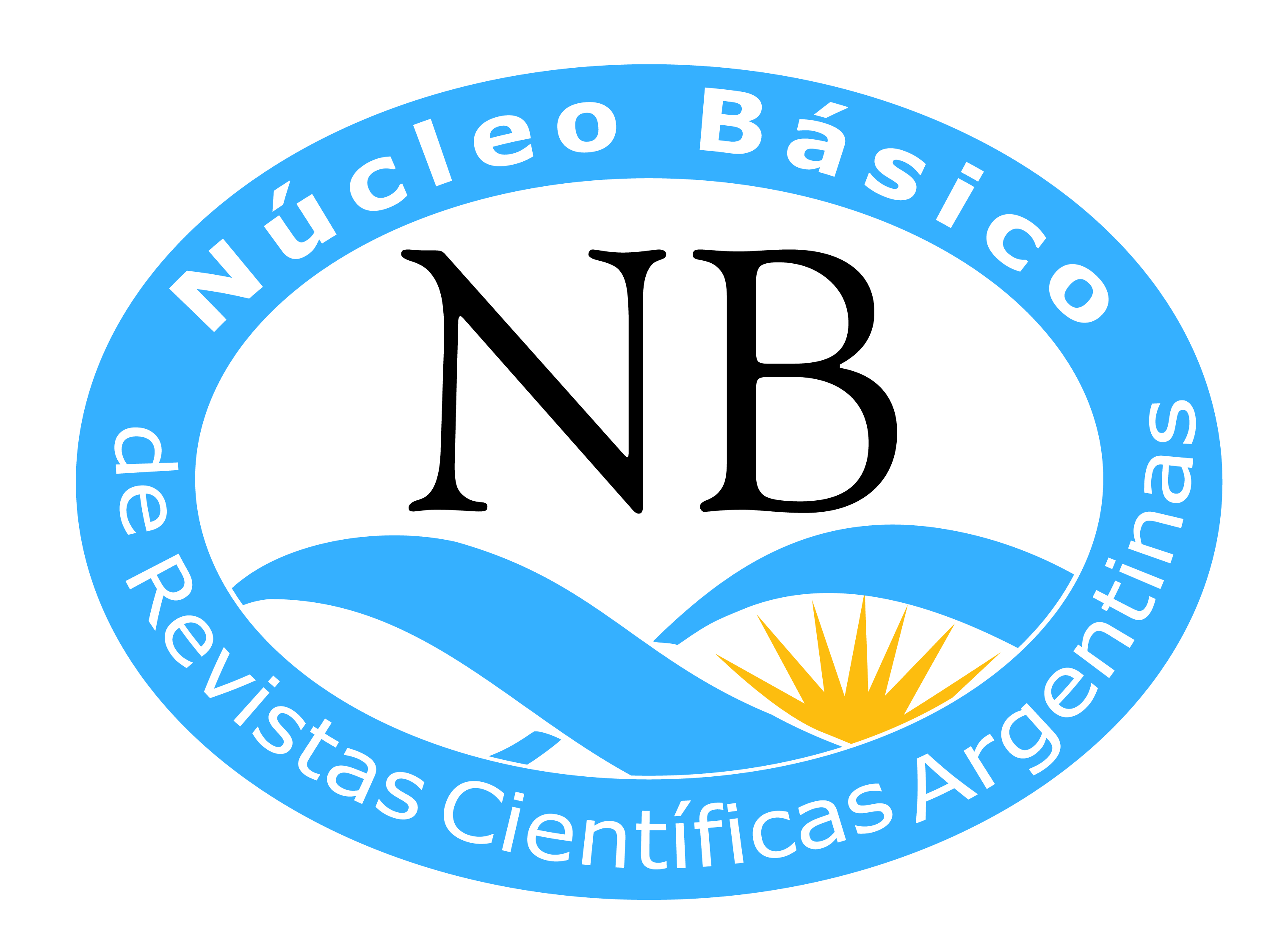The Argentine university system and the post-COVID19 challenges
DOI:
https://doi.org/10.61203/2347-0658.v11.n1.36530Keywords:
university, science and technology, ArgentinaAbstract
This essay proposes a reflection on the role of Argentine universities and the national Science and Technology (S&T) system of which they are part. We are interested in exploring three key aspects and the particularities under which this role is manifested in the Argentine case, when addressing the challenges of development. First, the institutional framework on which the university system is based, which is part of the national S&T system and which concentrates most of the scientific-technological activity produced in the country. Secondly, the incentives and practices that shape the trajectories of the scientific and technological community, where S&T activities are combined with undergraduate, graduate and postgraduate teaching. Thirdly, the demand for knowledge, both in terms of the productive environment and that derived from social aspects and public policy. A virtuous "meshing" of these three aspects requires managing the characteristics and timing of each of the dimensions and generating a process of reform in the incentive schemes and institutional framework to ensure that the success stories, which today exist in isolation, multiply and articulate with the broader national system, which also encompasses non-traditional S&T functions. The post-COVID19 world opens a space for rethinking academic and training practices and modifying the structures of linkage and articulation of academia with society.
Downloads
References
Arocena, R. (2019). A Prospective Approach to Learning- and Innovation-based Development. Millennial Asia, 10 (2), 127–147. DOI: https://doi.org/10.1177/0976399619853707.
Arocena, R, y J Sutz. (2012). Research and innovation policies for social inclusion: An opportunity for developing countries. Innovation and Development, 2(1), 147–158.
Arocena, Rodrigo, y Judith Sutz. (2020). The need for new theoretical conceptualizations on National Systems of Innovation, based on the experience of Latin America. Economics of Innovation and New Technology, 29(7), 814–829.
Arza, V. (2010). Channels, benefits and risks of public-private interactions for knowledge transfer: conceptual framework inspired by Latin America. Science and Public Policy, 37(7), 473–484. DOI: https://doi.org/10.3152/030234210X511990.
Barletta, F. y Yoguel, G. (2017). ¿De qué hablamos cuando hablamos de cambio estructural? En M. Abeles, M. Cimoli y P.J. Lavarello, Manufactura y cambio estructural: aportes para pensar la política industrial en la Argentina (pp. 27–54). Santiago: CEPEAL. Recuperado de https://repositorio.cepal.org/handle/11362/42614.
Barletta, F., Yoguel, G., Pereira, M. y Rodríguez, S. (2017). Exploring scientific productivity and transfer activities: Evidence from Argentinean ICT research groups. Research Policy, 46(8), 61–69. DOI: https://doi.org/10.1016/j.respol.2017.05.007.
Bisang, R. (1995). Libremercado, intervenciones estatales e instituciones de Ciencia y Técnica. Revista Redes, 3, 13–58.
Bush, V. (1945). Science The Endless Frontier. A Report to the President by Vannevar Bush, Director of the Office of Scientific Research and Development.
Casalet, M. (2004). Construcción institucional del mercado en la economía del conocimiento. Economía UNAM, 1(2), 52–63.
Cohanoff, C., Mederos, L. y Simón, L. (2014). La Universidad vinculada y sus desafíos. En M. Bianco y J. Sutz, Veinte años de políticas de investigación en la Universidad de la República: aciertos, dudas y aprendizajes (pp.85–106). Montevideo: UDELAR.
Cohen, W. y Levinthal, D. (1990). Absorptive Capacity: A New Perspective on Learning and Innovation. Administrative Science Quarterly, 35(1), 128–152.
Coraggio, J. L. (2003). La crisis y las universidades públicas en Argentina”. En M. Mollins (Comp.), Las Universidades en América Latina: ¿reformadas o alteradas? (pp.109–22). Buenos Aires: Consejo Latinoamericano de Ciencias Sociales CLACSO.
Dutrénit, G., y Sutz, J. (Eds.) (2014). Sistemas de Innovación para un Desarrollo Inclusivo. La experiencia latinoamericana. Ciudad de México: FCCyT.
Erbes, A., Katz, J. y Suarez, S. (2016). Aportes latinoamericanos en la construcción del enfoque de SNI. El énfasis en el desarrollo. En A. Erbes y D. Suarez, Repensando el desarrollo latinoamericano. Una discusión desde los sistemas de innovación (pp. 33-68). Buenos Aires: UNGS.
Erbes, A., Robert, V. y Yoguel, G. (2010). Capacities, innovation and feedbacks in production Networks in Argentina. Economics of Innovation and New Technology, 19, 719–741.
Fiorentin, F., Suarez, D. y Yoguel, G. (2021). Who benefits from innovation policy? The role of firm’s capabilities in accessing innovation public funds. Innovation and Development, 1-18.
Gibbons, M., Limoges, C., Nowotny, H., Schwartzman,S., Scott, P. y Trow, M. (1994). The New Production of Knowledge: The Dynamics of Science and Research in Contemporary Societies. London: Sage.
Giuliani, E. (2011). Role of Technological Gatekeepers in the Growth of Industrial Clusters: Evidence from Chile. Regional Studies, 45(10), 29–48. DOI: https://doi.org/10.1080/00343404.2011.619973.
Herrera, A. (1971). Ciencia y política en América Latina. México: Siglo XXI.
Kababe, Y. (2010). Las unidades de vinculación tecnológica y la articulación entre el sector científico tecnológico y el sector empresario. SaberEs, 2, 41–58.
Lavarello, P., Minervini, M., Robert, V. y Vazquez, D. (2020). Las políticas orientadas por misiones: el debate en los países centrales y su aplicación en el contexto de países en desarrollo. En D. Suárez et al., Teoría de la innovación: evolución, tendencias y desafíos. Herramientas conceptuales para la enseñanza y el aprendizaje (pp. 511–544). Buenos Aires/Madrid: Universidad Nacional de General Sarmiento / Universidad Complutense de Madrid.
Merton, R. K. (1968). The Matthew effect in science: The reward and communication systems of science are considered. Science, 159(3810), 56–63.
Metcalfe, J. S. (2010). University and Business Relations: Connecting the Knowledge Economy. Minerva, 48(1), 5–33. DOI: https://doi.org/10.1007/s11024-010-9140-4.
Perez, C. (2016). Teoría y políticas de innovación como blanco móvil. En A. Erbes y D. Suarez, Repensando el desarrollo latinoamericano. Una discusión desde los sistemas de innovación (pp. 293-327). Buenos Aires: UNGS.
Perkmann, M. y Walsh, K. (2007). University-industry relationships and open innovation: Towards a research agenda. International Journal of Management Reviews, 9(4), 259-280. DOI: https://doi.org/10.1111/j.1468-2370.2007.00225.x.
Sábato, J. y Botana, N. (1968). La ciencia y la tecnologia en el desarollo futuro de América Latina. Revista de la Integración, 3, 15–36.
Schot, J. y Steinmueller, W. (2018). Three frames for innovation policy : R & D , systems of innovation and transformative change. Research Policy, 47 (August), 1554–1567.
Suárez, D. y Erbes, A. (2021). What can national innovation systems do for development? Innovation and Development, junio, 1–16. DOI: https://doi.org/10.1080/2157930X.2021.1935641.
Suárez, D., Yoguel, G., Robert, V. y Barletta, F. (2013). El sistema argentino de innovación: determinantes micro y desarticulación meso-macro. En G. Dutrenit y J. Sutz (Eds.), Sistemas de Innovación para un desarrollo inclusivo. La experiencia latinoamericana. México, DF.: Foro Consultivo Científico y Tecnológico – Lalics.
Tedesco, J. C. (1986). Los paradigmas de la investigación educativa. Revista Colombiana de Educación, 18, 1-22.
World Bank. (2021). World Bank Database. Recuperado de http://microdata.worldbank.org. http://microdata.worldbank.org.
Downloads
Published
Issue
Section
License
Copyright (c) 2022 Integración y Conocimiento

This work is licensed under a Creative Commons Attribution-NonCommercial-ShareAlike 4.0 International License.
Authors who have publications with this journal accept the following terms:
a. Authors shall retain their copyright and guarantee the journal the right of first publication of their work, which shall simultaneously be subject to the Creative Commons License of Recognition which allows third parties to share the work as long as its author is indicated and its first publication is this journal.
b. Authors may adopt other non-exclusive licensing agreements for the distribution of the published version of the work (e.g., depositing it in an institutional telematic archive or publishing it in a monographic volume) provided that the initial publication in this journal is indicated.
c. Authors are allowed and encouraged to disseminate their work via the Internet (e.g. in institutional telematic archives or on their website) after publication of the article, which may lead to interesting exchanges and increased citations of the published work. (See The Effect of Open Access).



